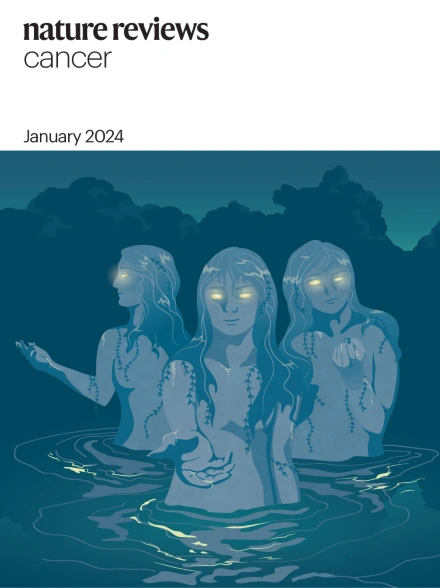Mechanisms, challenges and opportunities for FLASH radiotherapy in cancer.
IF 66.8
1区 医学
Q1 ONCOLOGY
引用次数: 0
Abstract
FLASH radiotherapy has the potential to improve both patient quality of life and outcomes by delivering radiation at ultrahigh dose rates to effectively target tumours while sparing healthy tissues. However, the differential sensitivity of healthy tissues versus tumours to FLASH radiotherapy remains unexplained. In this Perspective, we hypothesize that FLASH radiotherapy distinguishes healthy tissues from tumours based on subtle functional and structural biological differences. We identify commonalities present in the various healthy tissues that are spared by FLASH radiotherapy that might be lost during tumorigenesis. We also propose that a specific class of proteins, termed long-lived proteins, define a critical radiolytic target that are present in nearly every healthy tissue that is FLASH radiotherapy resistant yet are absent in tumours. We extend this structural hypothesis further by suggesting that tumour and extracellular matrix rigidity affects sensitivity to changes in radiotherapy dose rate, where more rigid and dense desmoplastic tumours are more sensitive to FLASH radiotherapy than those possessing more elasticity. Substantiating these concepts experimentally may provide a new and generalized mechanism of action of radiation effects and may therefore inform clinical trial designs by identifying those tumour subclasses expected to exhibit optimal responses to FLASH radiotherapy.闪光放射治疗癌症的机制、挑战和机遇。
通过以超高剂量率提供辐射,有效靶向肿瘤,同时保留健康组织,FLASH放疗有可能改善患者的生活质量和预后。然而,健康组织与肿瘤组织对FLASH放疗的不同敏感性仍未得到解释。从这个角度来看,我们假设FLASH放疗根据细微的功能和结构生物学差异区分健康组织和肿瘤。我们确定了各种健康组织中存在的共性,这些组织在肿瘤发生过程中可能会因FLASH放疗而丢失。我们还提出一类特定的蛋白质,称为长寿命蛋白质,定义了一个关键的放射溶解靶标,它存在于几乎所有具有FLASH放疗抗性的健康组织中,但在肿瘤中却不存在。我们进一步扩展了这一结构假设,表明肿瘤和细胞外基质的刚性影响对放疗剂量率变化的敏感性,其中刚性和致密的结缔组织增生肿瘤比具有更弹性的肿瘤对FLASH放疗更敏感。通过实验证实这些概念可能会提供一种新的、普遍的辐射效应作用机制,从而通过确定那些对FLASH放疗有最佳反应的肿瘤亚类,为临床试验设计提供信息。
本文章由计算机程序翻译,如有差异,请以英文原文为准。
求助全文
约1分钟内获得全文
求助全文
来源期刊

Nature Reviews Cancer
医学-肿瘤学
CiteScore
111.90
自引率
0.40%
发文量
97
审稿时长
6-12 weeks
期刊介绍:
Nature Reviews Cancer, a part of the Nature Reviews portfolio of journals, aims to be the premier source of reviews and commentaries for the scientific communities it serves. The correct abbreviation for abstracting and indexing purposes is Nat. Rev. Cancer. The international standard serial numbers (ISSN) for Nature Reviews Cancer are 1474-175X (print) and 1474-1768 (online). Unlike other journals, Nature Reviews Cancer does not have an external editorial board. Instead, all editorial decisions are made by a team of full-time professional editors who are PhD-level scientists. The journal publishes Research Highlights, Comments, Reviews, and Perspectives relevant to cancer researchers, ensuring that the articles reach the widest possible audience due to their broad scope.
 求助内容:
求助内容: 应助结果提醒方式:
应助结果提醒方式:


